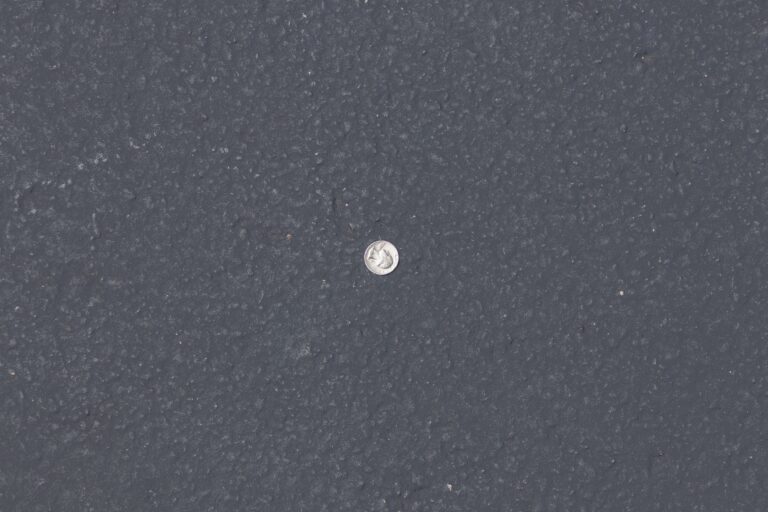How Do Pavement Preservation Surface Treatments Improve Your Overall Condition Index?

That is the million $$$$ dollar question for pavement maintenance managers. Over the years I’ve seen a wide range of approaches to this, but when you consider the variables involved, I’m not sure there is one correct answer for all. I would say, “It Depends…”
Let us discuss OCI, but we should focus first on PCI. OCI consider the observed distresses (PCI), the skid resistance, and the ride quality (IRI) (in most cases…OCI can take on many different aspects). The PCI just focuses on the pavement distress. Again, let us look at this first.
One of the longest standing methods I have worked with is to look at the distress of each pavement section and determine how the preservation surface treatment applied will affect the distresses observed.
For example, if we have a moderate severity crack (with its own deduct value), the application of a High-Density Mineral Bond (HA5) treatment will seal the crack. By definition, this will lower the severity of the crack to a low severity crack, yet the crack will remain.
A mill and overlay, in comparison, will effectively eliminate the surface crack. HA5 will also remove weathering distress and other surface issues, but will not change the conditions of potholes, rutting, or fatigue failures. The new PCI score can be calculated based on those changes. Other options include percent changes, PCI value increases by a set value, year/life extensions, or just an absolute number for a new PCI value.
The variability with this issue is that the repair will deteriorate at different rates depending upon the environment and the travel levels, among other things. This is one reason I like to discuss this topic with the local engineers to determine how preservation surface treatments have performed in the past on particular streets, and largely why I ask city engineers to help define the improvement scores to me. I provide guidance, but largely determine this based on their experience. Over time with continual evaluations at regular intervals, I can get a much better understanding of deterioration for a customer.
So How Does HA5 Increase Your Pavement Condition Index? What Is Its Appreciation Value?
In a recent pavement management case study of College Station, TX the local engineering consultant recommended HA5 a standard PCI improvement of 15 points. Upon review and going through their research analysis I think this is fair based on the distress a surface treatment will address. On average, as I work with multiple engineers in the state of Texas, I see an average appreciation value of 15 points added to their pavement management system at the completion of a HA5 street project.
In particular, the variable many Texas engineers have with HA5 is the durability and how long they have seen it last (since HA5 is new to the TX market, but has 18 years of proven durability). That may not be seen in the PCI improvement, but it may affect the rate of the deterioration curve, defining when this street should be treated again.
So now you have two issues, one being the condition of the street (perceived by the user) after the application, and the other being the durability (which is not factored into a PCI or OCI score).
Looking at the OCI issue, now we must determine how a HA5 treatment affects the skid resistance and the ride quality. The skid issue is likely not changed significantly, but once again; it depends on the condition of the existing pavement surface. The ride quality is also likely not affected much by an HA5 treatment.
The value of the HA5 treatment is in the performance and durability, which really affect the deterioration curves engineers use in optimization and scheduling, instead of the new PCI/OCI score.
As I stated, the PCI/OCI score is just one factor in how the existing, observed conditions are changed. The biggest value is in how long the treatment lasts and how it protects the conditions from deteriorating further. The High-Density Mineral Bond is now installed in 25 states and our network of contractors have installed over 600 million square feet.
Key factor – do not discount the importance of PCI. A PCI calculation may be used for several reasons, but it is always a good baseline for application of road management, maintenance, and rehabilitation techniques.
Summary:
Over the past few years, I have received questions about whether the High-Density Mineral Bond (HA5) increases the PCI directly after an application. The short answer is – yes, HA5 pavement preservation applied can potentially increase the PCI.
It depends on multiple factors: (1) what the condition of the road was before HA5 was applied, (2) which distresses have been identified and (3) severity level.
AASHTO standards when determining PCI include multiple variables/pavement distresses, one of them being raveling. When rating a road to determine PCI, the rating can be brought down due to high amounts and severity of raveling.
When HA5 is applied over the top of the raveling, and the same street is rated for PCI, that number will more than likely be a bit higher due to the HA5 coverage.
HA5 does provide an armor like-shell with exceptionally high durability that extends the life of the asphalt binder by resisting oxidative deterioration. The key to a successful pavement management work plan is to deploy the right treatment, on the right road, and at the right time! Ever heard that line before?
IT IS SO VERY TRUE!
- Significantly extends pavement life
- Lower cost of pavement ownership/management
- Performance backed by seven year study
- Millions of square feet installed by municipalities
- High Public approval rating
- Faster installation
© Copyright Andale Construction Inc. All rights reserved
